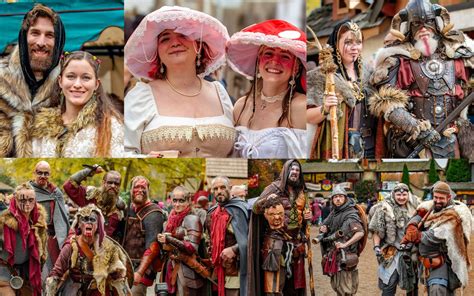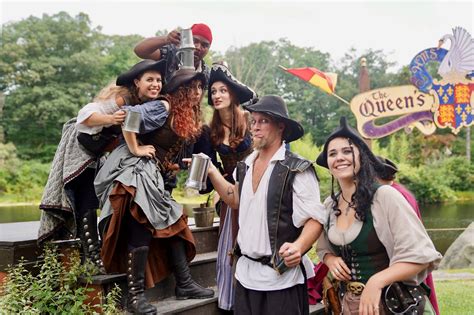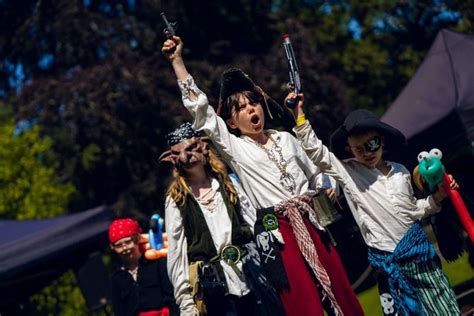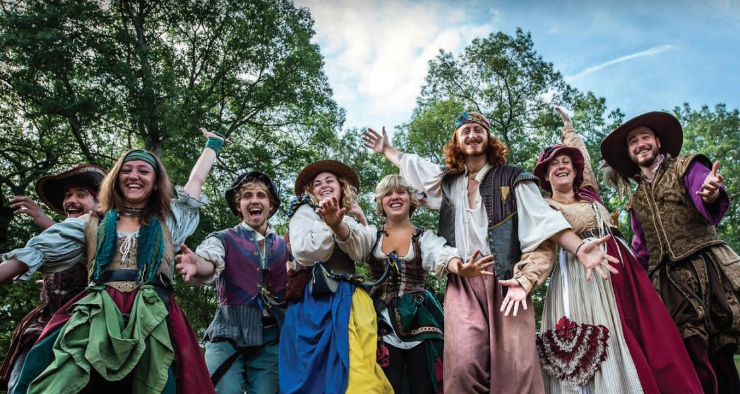Renaissance festivals offer a captivating journey into the past, where history, culture, and imagination intertwine. Originating as a celebration of the art, music, and customs of the Renaissance period, these festivals have evolved into vibrant events that attract millions of visitors worldwide. They are more than just a nostalgic nod to a bygone era; they are a living tapestry of traditions, featuring iconic costumes, authentic foods, and spirited performances. From the intricate craftsmanship of artisans to the lively reenactments of historical events, Renaissance festivals provide a unique opportunity to explore the magic of history while experiencing the diverse interpretations and influences that have shaped these celebrations across the globe.
ritarblog.com will lead an exploration of this topic in detail.
1. Historical Background and Origins
The origins of Renaissance festivals can be traced back to the mid-20th century, fueled by a burgeoning interest in the captivating history and culture of the European Renaissance. The first official Renaissance fair, staged in California in 1963, strived to evoke the bustling ambiance of a 16th-century European village. This event, christened the “Renaissance Pleasure Faire,” was conceived as an educational endeavor, aiming to transport visitors into the daily life, traditions, and artistic expressions of the Renaissance era.
The concept swiftly gained traction, spreading throughout the United States and eventually reaching global shores. These festivals frequently draw inspiration from the English Renaissance, an era characterized by profound progress in art, literature, and science. Nevertheless, they have also embraced a wider array of historical influences, incorporating elements from diverse cultures and time periods. Over time, Renaissance festivals have transformed from modest, local gatherings into expansive events, attracting aficionados and history enthusiasts alike who are eager to commemorate the enduring legacy of the Renaissance and its lasting influence on contemporary culture.

2. Iconic Costumes and Fashion
Renaissance festivals captivate audiences with their focus on costumes and fashion, offering a vibrant window into the past. Attendees often adorn themselves in elaborate outfits that reflect the clothing styles of the 16th century, particularly the English Renaissance. These garments are meticulously crafted with opulent fabrics like velvet, silk, and brocade, and embellished with intricate lace, embroidery, and jewels, mirroring the luxurious attire favored by the nobility of that era.
Men’s attire often features doublets, breeches, and tall boots, with hats adorned with feathers and metal accents adding to the ensemble. Women’s fashion showcases flowing gowns with fitted bodices, wide skirts, and layers of petticoats, further enhanced by ornate headpieces and jewelry. The level of historical accuracy in these costumes varies, with some participants choosing precise replicas while others embrace more imaginative interpretations, blending different periods and styles.
Renaissance festival costumes are more than just attire; they act as portals to a bygone era. By donning these garments, attendees transform into nobles, peasants, merchants, or even mythical figures, fully immersing themselves in the experience. The fashion of these festivals not only showcases the elegant styles of the past but also fuels creativity, self-expression, and a profound appreciation for the rich history and culture of the Renaissance.

3. Traditional Foods and Drinks
A cornerstone of the Renaissance festival experience is the traditional food and drink. Transporting visitors back in time, these festivals offer a diverse array of robust, rustic dishes drawing inspiration from the culinary practices of the 16th century. Turkey legs, a true icon of the festival, are a beloved staple. Their substantial size and smoky flavor evoke the grand feasts enjoyed by the nobility of the era.
Beyond the iconic turkey legs, festival attendees can savor a variety of hearty dishes. Meat pies, roasted meats, and steaming stews, often served in rustic bread bowls, evoke the simple yet flavorful cuisine of the time. For those seeking a sweet ending, fruit tarts, candied nuts, and spiced cakes provide a delightful dessert experience.
Renaissance festivals offer a diverse array of beverages, with ale, mead, and cider ranking among the most popular choices. These traditional drinks, frequently brewed locally, contribute an authentic touch to the festival ambiance, enabling visitors to fully immerse themselves in the flavors and customs of the Renaissance era.

4. Popular Performances and Entertainment
Renaissance festivals offer a vibrant and diverse array of entertainment, drawing upon the rich cultural traditions of the period to engage and delight visitors. Jousting tournaments, where armored knights on horseback compete in thrilling displays of skill and bravery, are a popular attraction. These reenactments, capturing the chivalric spirit of the Middle Ages, are a crowd favorite.
In addition to jousting, visitors can experience a diverse range of stage performances. These include Shakespearean plays, comedic skits, and musical acts featuring period instruments such as lutes and harps. Often performed on open-air stages, these presentations create an intimate and lively atmosphere, bringing the Renaissance era to life.
The festive atmosphere is amplified by street performers, including jugglers, magicians, and jesters, who roam through the crowds, interacting with attendees. Dance troupes and historical reenactment groups contribute to the immersive experience, showcasing traditional Renaissance dances and crafts. Combined, these performances and entertainment options create a dynamic environment that transports visitors to the heart of the Renaissance era.
5. Unique Crafts and Artisan Exhibits
Renaissance festivals are celebrated for their distinctive crafts and artisan exhibits, which highlight the skills and artistry of the era. These exhibits present visitors with the chance to explore a wide variety of handcrafted goods, encompassing everything from intricate jewelry and leatherwork to hand-forged weapons and pottery. Artisans at these festivals frequently utilize traditional techniques, offering live demonstrations of blacksmithing, glassblowing, weaving, and other crafts that were fundamental to daily life during the Renaissance.
The craftsmanship showcased at these festivals is a testament to the artisans’ skill and a reflection of the cultural and historical significance of the era. Many items created and sold are inspired by historical designs, ensuring authenticity and uniqueness. Visitors can purchase a variety of goods, including handmade clothing and accessories, as well as home decor items, all imbued with the spirit of the Renaissance.
Beyond physical crafts, the festivals showcase the artistry of the Renaissance through demonstrations of painting, calligraphy, and wood carving. These exhibits not only illuminate the creative spirit of the era but also provide tangible reminders of the past for visitors to cherish. The artisan exhibits, therefore, stand as a central component of the festival experience, fostering a deep connection to history through the captivating beauty of handcrafted works.
6. Modern Interpretations and Global Influence
Modern Renaissance festivals have transcended their origins, morphing into global celebrations that harmonize historical accuracy with contemporary creativity. Once confined to localized events centered on the European Renaissance, these festivals now embrace influences from diverse cultures and time periods. This fusion of elements fosters a broader, more inclusive understanding of the Renaissance, inviting visitors to experience a blend of historical reenactment and imaginative fantasy.
Renaissance festivals have sparked a global trend of similar events, each reflecting its unique local traditions and history. While maintaining the core elements of elaborate costumes, captivating performances, and skilled craftsmanship, these festivals have taken on diverse forms across the world. In the United States, fairs often blend medieval and fantasy themes, drawing in a wide range of enthusiasts. Meanwhile, in Europe and beyond, these festivals celebrate regional history, adapting the Renaissance fair model to fit their distinct cultural contexts.
The global reach of Renaissance festivals is also evident in their inspiration for other types of historical reenactment events, such as Viking festivals and pirate fairs. These modern interpretations serve to perpetuate the spirit of the Renaissance, enabling people of diverse backgrounds to connect with the past and celebrate the vibrant tapestry of history and culture that defines the Renaissance era.
Renaissance festivals offer a unique and immersive experience, celebrating the rich history, culture, and traditions of the Renaissance period. From the elaborate costumes and traditional foods to the vibrant performances and artisan crafts, these festivals provide a captivating glimpse into a bygone era. Their modern adaptations and global reach reflect a continued fascination with the past, blending historical authenticity with contemporary creativity. Whether through historical reenactments or imaginative reinterpretations, Renaissance festivals remain a cherished way to connect with and celebrate the enduring legacy of the Renaissance.
ritarblog.com

